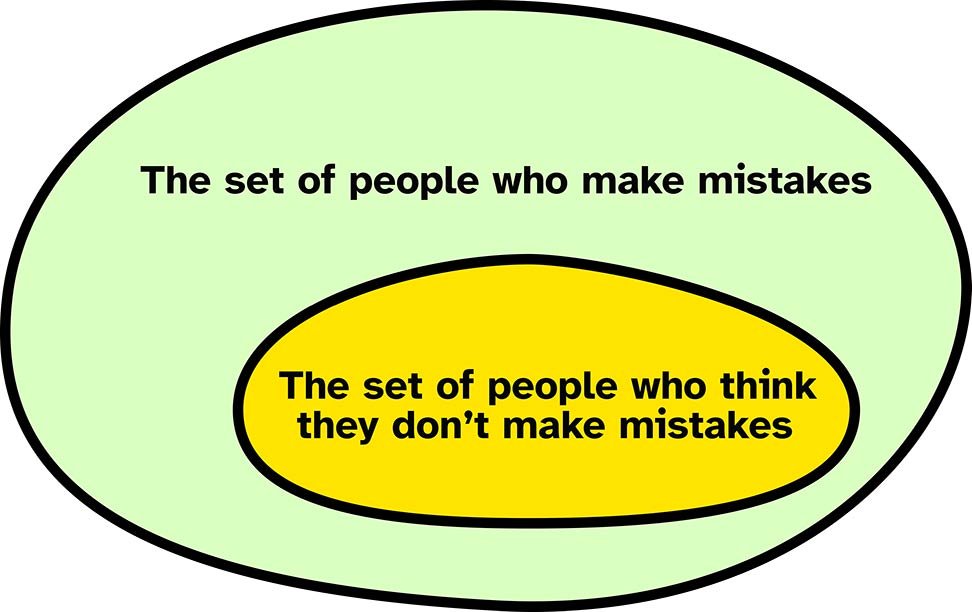If you work on the web, you’ve likely seen heated emotional outbursts in the office. When someone barks at you because their business process must change or you’ve presented a concept that doesn’t match their mental framework, it’s easy to take their words personally and get agitated. But people have a right to experience emotions. They might not always cope in healthy ways (and you don’t always have to accept the resulting behavior), but it’s part of our job to hear them out.
Article Continues Below
During my time managing content strategy at a university, I witnessed tears and frustration over font colors, training requirements, form fields, and access levels. It took me years of studying human behavior to realize it was my responsibility to accept the emotions. I could no longer chalk it up to people “not getting the web” or “not seeing the big picture.” Those excuses weren’t getting me anywhere when furious folks showed up in my office unannounced. And those excuses weren’t fair. I needed to be a better partner.
So how do we turn challenging outbursts into productive conversation?
Look for the signs and pick your strategy#section2
Validating emotions isn’t a glorified psychological process. It’s about being a real, authentic human being who empathizes with another’s emotional state. And, guess what, that’s damn hard.
Instead of releasing a defensive remark, refocus and try to understand what’s fueling the outburst. Psychiatrist Dan Siegel believes that by naming our emotions we have a shot at removing ourselves from their grasp. I’m certainly no psychiatrist, but after years of watching humans build web products together, I’ve noticed most people get wound up over four core issues:
- Security
- Freedom
- Identity
- Worth
If we look for signs that indicate what’s behind fierce comments, we can attempt to defuse and move forward.
Calming insecurity#section3
Working on the web involves a lot of change. We test new technologies, try out different processes, take on diverse clients, and integrate new best practices. It’s easy to feel a few steps behind. Anyone who provides direct support knows what it’s like when people experience something new and unfamiliar.
“I NEED THIS FIXED NOW.”
“I DON’T KNOW WHAT’S GOING ON!”
“I KEEP TRYING THAT AND IT’S NOT WORKING. THIS IS BROKEN.”
Perhaps a CMS user is struggling to make updates. Maybe a sales rep is trying to pull a new analytics report for a client. If not handled well, these emails are followed up by phone calls or drive-by office visits. In my experience, they can even lead to high-level meetings with angry department heads voicing concerns about how the web team doesn’t care.
These hectic reactions often indicate that people feel insecure. They’re a step or two outside their day-to-day domain and they don’t feel confident. Ultimately, they’re experiencing fear of the unknown. And fear releases adrenaline bombs launching us into fight-or-flight mode, which is why we love scaring ourselves and why people get hot and hung-up.
Witnessing this type of response is our cue to scan the context to identify what’s driving the insecurity. Did we move to a new CMS and now a colleague is struggling to relearn their job? Is a marketing specialist preparing quickly for a meeting and they’ve forgotten how to pull the right report? When we read through their emotions, we can identify their basic needs, and then:
Avoid blame. Steer the conversation away from what they’re doing wrong or what they don’t understand. Instead, let them know you’re happy to help and together you can make it happen.
Tailor language to make people feel comfortable. Using insider jargon is the fastest way to make someone outside our field feel even more insecure. Instead, see the conversation as an opportunity to help colleagues or clients boost their confidence.
Give away your knowledge. Beyond simply making a fix or giving a brief explanation, try digging up a few resources to help someone understand your field even better. I worked with a designer who’d respectfully send me links to articles after we worked through heated challenges. Instead of protecting his expert knowledge, he’d direct me right to his source so I could feel more confident in the future.
Addressing the fight for freedom#section4
No one likes being told they can’t do something. But web work, be it enterprise content management, development, or design, involves lots of saying no. Workflows dictate who can and can’t publish pages. Browsers and devices constrain our key strokes. Content templates confine layout flexibility. Like I said, lots of no. And inevitably our saying no is going to stir up opposition.
In enterprise contexts, we sometimes encounter those who push back because they want more personal independence. In my higher ed days, I came across professors and department staff who refused to attend CMS training or neglected our architecture standards. They openly challenged these governance practices because they wanted to manage their sites without conforming to institutional process.
In agency environments, enforcing well-intentioned web standards can make others feel like they’ve failed. When we say no to requests that come from our sales or client reps, their frustration with our restrictions is less about personal freedom and more about wanting to deliver. They don’t want to let the client down so they’ll insist it’s absolutely necessary.
When it comes to freedom issues, we can start by asking questions like:
- What are you trying to accomplish?
- How do our restrictions keep you from doing your job?
- What alternatives do we have?
Then, we need to pop open the hood to show them exactly what we’re up against. If a client rep makes a last-minute request to add a content chunk that will change the functionality of an entire template, we can bring up the CMS, show them how the template works, and outline what their change would entail. Or, if a renegade web editor repeatedly breaks basic usability best practices, we can call a meeting, walk through examples of the user experience we’d like to create (and avoid), and brainstorm other ways to meet their goals.
It’s respectful to offer our full knowledge and shoot for shared understanding instead of hiding behind the technical veil. Also, don’t be afraid to change your mind. If you understand their motivations, logic, and rationale, you might decide to adjust your processes or tactics. That’s okay. You don’t always need to defend your ground as the expert.
Affirming the identity-seeker#section5
Some of the most delicate emotional responses we run into surface when people experience identity issues. A new hire wants to solidify their role. A new team lead wants to redirect the project because of their years of experience. A company goes through rebranding and longtime writers have to find a new voice.
“Well, I’ve used Drupal for over 10 years. I don’t understand why that wasn’t the obvious choice.”
“Of course I know QR codes. I’ve used them. That’s why we need a QR code.”
“That’s something my strategy team does. It’s not your job.”
Working as a contractor and consultant, I prepare myself to hear these types of comments from those trying to reposition when I join a team. I don’t blame them. They simply want to be seen as a valuable contributor. So do I.
Instead of shooting them down by defending my expertise, I reinforce their identity by inviting them to share their knowledge and experience. A helpful phrase is Kristina Halvorson’s “tell me more about that” line:
“We’re glad you’re on this team. We need your expertise. Tell me more about what you know.”
or
“Sounds good. Tell me more about how a QR code will help us drive traffic.”
Affirming others by asking them to share their experience doesn’t mean you need to go along with their ideas. But it helps you calm their defensive posture, not look like an opponent, and move the conversation to productive ground.
Restoring value and worth#section6
Emotions don’t always manifest in loud declarations or snippy emails. Sometimes people just check out. At the university, I noticed a once oppositional stakeholder had grown silent. But just because I no longer heard his clamoring didn’t mean everything was cool. He had disengaged and wasn’t keeping his site up to date, to the detriment of his users. I realized it was our failure because we hadn’t been listening to him.
Withdrawal usually happens when people don’t feel heard, repeatedly. Maybe in a large organization, a department head’s project keeps getting shoved to the end of the queue, so they give up. Or maybe a junior developer feels overshadowed by seniority. They’re not chiming in because they believe it doesn’t matter.
The good news is we can boost worth with seemingly simple things like listening and letting people be themselves. Margaret Wheatley, known for her organic approach to organizational behavior, believes it’s more about being present than formulaic strategies:
We spend so much time in complex group processes focused on team building, problem-solving, effective communications, etc. But what happens when we forget about technique and just try to be present for each other? Have you experienced what happens in you and others when we really listen to each other?
So what’s the takeaway? We need to make an intentional effort to be present and recognize people as we go about our daily bustle. How do we do it?
Invitations. Draw others into your conversations. If a developer seems quiet in a meeting, ask for their opinion (even if it’s not about development). If you’re working on a new approval workflow, grab coffee with one of your more challenging web contributors and ask them how a process change could make their job easier.
Specific praise and appreciation. In their book How the Way We Talk Can Change the Way We Work, researchers Robert Kegan and Lisa Laskow Lahey advise us to put more power in our compliments if we want people to know their worth. Instead of saying:
“Thanks, Greg! You’re doing great work.”
Take a few seconds to think about why Greg’s work is great. And then tell him directly:
“Thanks, Greg! I like the way you programmed that content type. It’s smart development. I think it will make maintenance a lot easier for our client. And I appreciated the way you advocated for that in our meeting.”
Access. If you work in large systems, offering a clear, reliable support channel provides all stakeholders with equal access to be heard. Or holding open meetups can give your web colleagues regular face time and an avenue for bringing up concerns.
Ultimately, listening and recognizing others takes time, and in the fast-moving chaos of web development, strategy, or production, we don’t have the cycles to acknowledge someone who’s not asking for our immediate attention. So we need to get intentional about being present.
See the common sense above the struggle#section7
These arguments might seem like common sense. And honestly, they are. It’s easy to step back objectively when we’re not under the gun. But, at our core, we’re not logical beings. We get swept in and stir things up. It’s difficult to stay levelheaded.
So when strong emotional reactions spike, we have to do our best to accept them and not make it personal. Only from a non-defensive stance can we accurately assess what’s triggering the reaction. If we can pinpoint the issue, be it security, freedom, identity, or worth, we have a chance to turn the conversation around. So next time someone barks, temper your hackles, draw a deep breath, and be present.




